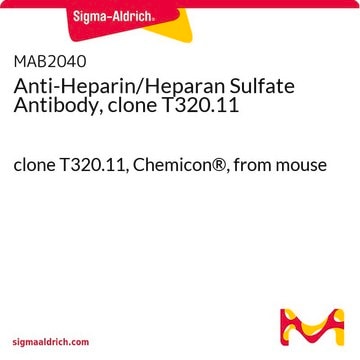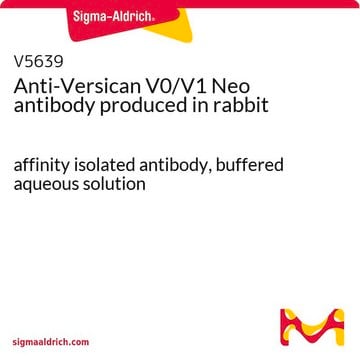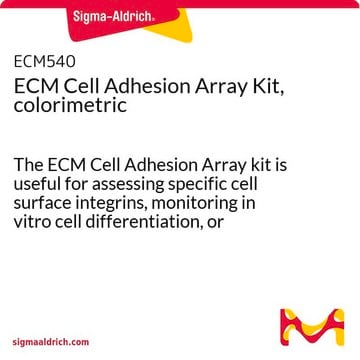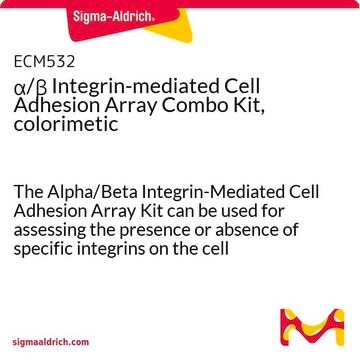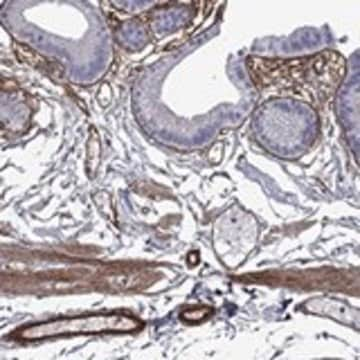MABT12
Anti-Heparan Sulfate Proteoglycan (Perlecan) Antibody, clone 5D7-2E4
clone 5D7-2E4, from mouse
Synonyme(s) :
heparan sulfate proteoglycan 2 (domain V region), perlecan proteoglycan, basement membrane-specific heparan sulfate proteoglycan core protein, HSPG, PLC
About This Item
Produits recommandés
Source biologique
mouse
Niveau de qualité
Forme d'anticorps
purified immunoglobulin
Type de produit anticorps
primary antibodies
Clone
5D7-2E4, monoclonal
Espèces réactives
human
Technique(s)
immunocytochemistry: suitable
immunohistochemistry: suitable
western blot: suitable
Isotype
IgG1κ
Numéro d'accès NCBI
Numéro d'accès UniProt
Conditions d'expédition
wet ice
Modification post-traductionnelle de la cible
unmodified
Informations sur le gène
human ... HSPG2(3339)
Description générale
Immunogène
Application
Western Blot Analysis: A previous lot was used by an independent laboratory on a 3-8% Tris-acetate gel in which the band appears above the 460 kDa marker. (courtesy of Whitelock, J. Graduate School of Biomedical Engineering, University of New South Wales, Sydney, Australia)
Cell Structure
ECM Proteins
Qualité
Immunohistochemistry Analysis: 1:300 dilution of the antibody detected Perlecan in fresh-frozen normal human tonsil tissue.
Description de la cible
Forme physique
Stockage et stabilité
Remarque sur l'analyse
Fresh-frozen normal human tonsil tissue
Autres remarques
Clause de non-responsabilité
Not finding the right product?
Try our Outil de sélection de produits.
Code de la classe de stockage
12 - Non Combustible Liquids
Classe de danger pour l'eau (WGK)
WGK 1
Point d'éclair (°F)
Not applicable
Point d'éclair (°C)
Not applicable
Certificats d'analyse (COA)
Recherchez un Certificats d'analyse (COA) en saisissant le numéro de lot du produit. Les numéros de lot figurent sur l'étiquette du produit après les mots "Lot" ou "Batch".
Déjà en possession de ce produit ?
Retrouvez la documentation relative aux produits que vous avez récemment achetés dans la Bibliothèque de documents.
Notre équipe de scientifiques dispose d'une expérience dans tous les secteurs de la recherche, notamment en sciences de la vie, science des matériaux, synthèse chimique, chromatographie, analyse et dans de nombreux autres domaines..
Contacter notre Service technique

